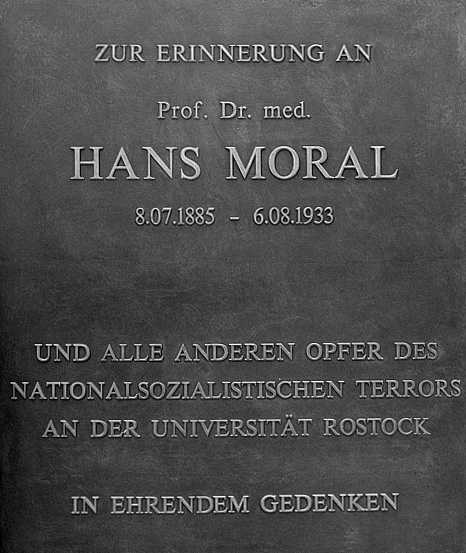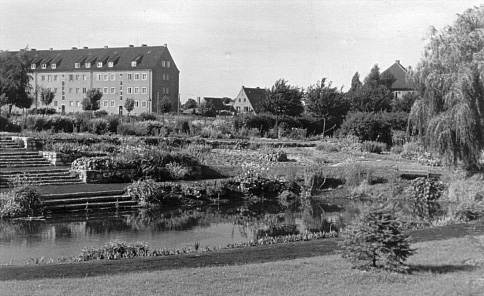1933
After the National Socialists came to power, academic self-administration began to be dismantled. The so-called leader principle (“Führerprinzip”) was introduced. Powers previously held by the Senate and Council were transferred to the Rector.
Few professors refused to take the “Führer's oath”. Professors von Fritz and Katz emigrated, Professor Moral was driven to suicide.
1935-1939
Creation of the Botanical Garden, Hamburger Straße (open to the public from Whitsun 1939).
1935
The Guidelines for the Unification of Higher Education were issued by the Reich Ministry for Science, Education and Culture (Reichsministerium für Wissenschaft, Erziehung und Volksbildung). This decree repealed all transitional provisions. The Rector, being the leader of the University, was now directly subordinated to the Reich Ministry and was appointed by it.
1938
A chair for hereditary biology and ethnology was established; Honorary Professor Hermann Boehm had already given lectures in the winter semester of 1937/38. He was appointed to Giessen.
From 1943, Hans Grebe from the Kaiser Wilhelm Institute for Anthropology, Human Genetics and Eugenics, Berlin, continued the lectures. As an extraordinary professor, he also took over the management of the Institute on 01 October 1944.
1939
Opening of a new book storage facility for the University Library (the most modern in the world at the time).
1942
In addition to major damage to the city, the University also suffered building damage during the Second World War (1939-1945). The Medical Clinic in Schröderplatz (rebuilt while the War was still on after being reduced to one floor), the Dermatological Clinic in Schröderplatz and its domicile at the Rostock Gehlsheim Regional Care Institute, and the Institute of Hygiene in Buchbinderstraße were completely destroyed. The children's clinic on Augustenstraße also suffered severe damage. In 1944, part of the Botanical Garden in Hamburger Strasse was also destroyed.
1944
Opening of the completed parts (central wing and north wing) of the new children's clinic building in Rembrandtstraße.
1945
The Dermatological Clinic took over the remaining parts of the children's clinic in Augustenstraße.
Source: 575 Jahre Universität Rostock. Mögen viele Lehrmeinungen um die eine Wahrheit ringen. Rostock 1994, S. 341-343.
Further reading:
Buddrus, Michael, Fritzlar, Sigrid: Die Professoren der Universität Rostock im Dritten Reich. München 2007 (Texte und Materialien zur Zeitgeschichte Bd. 16).
Deinert, Juliane: Die Studierenden der Universität Rostock im Dritten Reich. Rostock 2010 (Rostocker Studien zur Universitätsgeschichte, 11). LINK
Holze, Heinrich (Hg.): Die Theologische Fakultät Rostock unter zwei Diktaturen. Studien zur Geschichte 1933-1989. Festschrift für Gert Haendler zum 80. Geburtstag. Münster 2004.
Jahnke, Karl Heinz: Endpunkt: KZ Auschwitz. Frühere Angehörige der Universität Rostock. Rostock 2004.
Jügelt, Karl-Heinz: Schandpfahl und Bücherverbrennung in Rostock. Die studentische Aktion "Wider den undeutschen Geist" an der Mecklenburgischen Landesuniversität im Mai 1933. In: Zeitgeschichte regional 2 (1998), S. 29-38.
Riedel, Wolfgang: Festbroschüre anlässlich des 60-jährigen Bestehens der Fakultät 1942-2002. Rückblick, Einblick, Ausblick. Rostock 2002.


